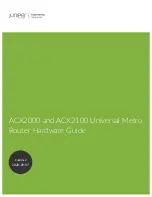
Tarana Wireless, Inc. ©2021. All rights reserved.
RN Installation Guide vIG_RN_CBRS_2021-08
—
4
General Hazards
Topic
Explanation
Protection from RF
Exposure
When installing, servicing or inspecting an antenna always comply with the following:
•
Locate the antenna such that it does not infringe the RF Exposure Limit Distance, relating to the Compliance Boundary General
Public.
•
Stay aware of the potential risk of RF exposure and take appropriate precautions.
•
Do not stand in front of or look into an antenna without first ensuring the associated transmitter or transmitters are switched off.
•
At a multi-antenna site ask the site owner or operator for details of other radio services active at the site and for their
requirements/recommendations for protection against potentially harmful exposure to RF radiation.
•
When it is not possible to switch transmitters off at a multi-antenna site and there is potential for exposure to harmful levels of RF
radiation, wear a protective suit.
Grounding
Connections
Reliable grounding of the RN chassis must be maintained.
Power Supply
The RN must be powered by a Tarana provided Power over Ethernet (PoE) injector.
Maximum Ambient
Temperature
The maximum ambient temperature for the RN product is 55 degrees C. To ensure correct operation and to maximize long term
component reliability, ambient temperatures must not be exceeded. Operational specification compliance is not guaranteed for higher
ambients. The RN should be mounted in such a way as to permit the vertical free flow of air through its cooling fins.
Rack Mount
Temperature
Considerations
The RN is designed to operate in an outdoor environment with no significant obstructions in front of the radome. Do not install the RN in
a closed or multi-unit rack assembly, because such a closed rack would impede the propagation of the RF signals. The maximum
ambient temperature applies to the immediate operating environment of the RN product.






































